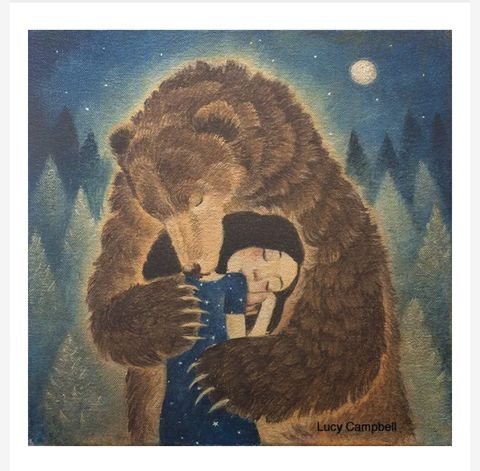
Mama Bear borrowed from donnaashworth.com
Recently I was called a Mama Bear. I’ll take it. I was in a meeting with a professional, my daughter and son-in-law. At one point, quite unexpectedly and out of character, I flared with outrage and strong, protective language at the way my children were being treated. (I believe it stunned my daughter, but I’m sure I heard my son-in-law cheering in the background of our Zoom call!) I don’t really know how this landed because I needed to excuse myself from the call, but was later teased as their Mama Bear. Again, I’ll take it.
Bears. What do they mean to you? Do you have bears in your life – figuratively or literally? I certainly do.
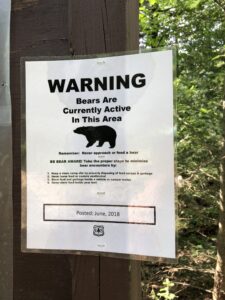 The Green Mountain National Forest, and more specifically the Camel’s Hump State Forest, are just outside my door. It is therefore no surprise that black bears, who find this an ideal setting in which to live, breed and raise their young, are my next-door neighbors. For the most part, they are good neighbors. They have yet to knock on my door, but they have walked within yards of my home. They keep going, though, as there is nothing to tempt them and, if she notices, my chocolate Lab, Sophie, will make quite a fuss.
The Green Mountain National Forest, and more specifically the Camel’s Hump State Forest, are just outside my door. It is therefore no surprise that black bears, who find this an ideal setting in which to live, breed and raise their young, are my next-door neighbors. For the most part, they are good neighbors. They have yet to knock on my door, but they have walked within yards of my home. They keep going, though, as there is nothing to tempt them and, if she notices, my chocolate Lab, Sophie, will make quite a fuss.
In fact, it is Sophie about whom I worry the most. Her habit is consistent; her bear-sighting behavior is always the same. First there is that bear barking – it is unique to bear sightings and I know immediately what’s up. In the car she will turn circles barking all the time and I know to look roadside for a bear. Off leash, she will dart in the direction of the bear – but run in very large circles around it until it trees. She will then return to me begging to show me what she has done. No thank you. Let’s walk quietly and steadily home! [Note: I avoid the woods in the spring when the babies are very young and stick to the dirt roads. I also leash her for much of our travels. A bear and dog dispute is not something I want to incite or witness.]
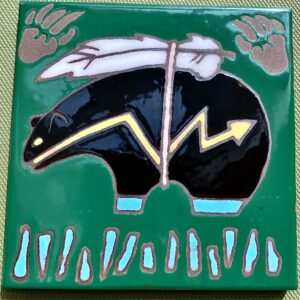 But let me go back to some of what I have learned. First of all, here in Vermont, we have BLACK bears. I first learned this a few years ago. I was hiking a 4000’ trail in New Hampshire on a day when there were very few cars parked on the lot below so allowed Sophie to hike off leash. At one point she ran just ahead of me, around a sharp turn, and I heard a voice shout – “OH (expletive-expletive)! If this is a bear, I’m dead!” (Note, Sophie is effusive in her greetings.) Within seconds several other young male voices laughed and teased the first male and began to play with Sophie. One reminded him that if, in fact, this had been a brown bear, he would be dead.
But let me go back to some of what I have learned. First of all, here in Vermont, we have BLACK bears. I first learned this a few years ago. I was hiking a 4000’ trail in New Hampshire on a day when there were very few cars parked on the lot below so allowed Sophie to hike off leash. At one point she ran just ahead of me, around a sharp turn, and I heard a voice shout – “OH (expletive-expletive)! If this is a bear, I’m dead!” (Note, Sophie is effusive in her greetings.) Within seconds several other young male voices laughed and teased the first male and began to play with Sophie. One reminded him that if, in fact, this had been a brown bear, he would be dead.
So, what’s the difference? I learned from my brother that Brown bears come in two sizes – very, very large (the kind you see on videos scooping up salmon; in Alaska they’re Kodiaks) and Grizzlys, considered a subspecies of the Brown bear. I prefer to meet up with neither. We normally associate Brown bears with the western part of the U.S.
Last year there was a video (that went viral) of a Mama Bear in New England doing her best to usher her cubs across two lanes of stopped traffic. It was endearing. However, it is perhaps best that Mama Bear was only frustrated by her young and not by the spectators. Human parents with multiple babies could certainly relate. In fact, for us human parents, the Mama Bear instincts are not only understandable and relatable, but also to be respected.
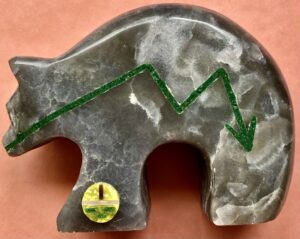 Which brings me back to my Mama Bear story. In 2000, I found myself unexpectedly single and in Santa Fe with my daughter who had just graduated from high school. It was meant to be a family celebration but became something much different. With my daughter’s help, I connected with the strength that I would need to go forward and recognized that the small, stone bear I purchased had special significance for me and for the years ahead. In Native American tradition, bears symbolize physical strength, leadership and are known as the “first helper.” Bear paws are a symbol representing inner strength. My new little figurine of a Zuni bear signifies The Guardian of the Earth. A heart-line arrow going from head to heart symbolizes a warrior’s heart, strong like the bear’s. If no longer a wife, I would be forever a Mama Bear. Today my bear sits on my desk next to my computer monitor. It has traveled many miles and through many situations since the year 2000.
Which brings me back to my Mama Bear story. In 2000, I found myself unexpectedly single and in Santa Fe with my daughter who had just graduated from high school. It was meant to be a family celebration but became something much different. With my daughter’s help, I connected with the strength that I would need to go forward and recognized that the small, stone bear I purchased had special significance for me and for the years ahead. In Native American tradition, bears symbolize physical strength, leadership and are known as the “first helper.” Bear paws are a symbol representing inner strength. My new little figurine of a Zuni bear signifies The Guardian of the Earth. A heart-line arrow going from head to heart symbolizes a warrior’s heart, strong like the bear’s. If no longer a wife, I would be forever a Mama Bear. Today my bear sits on my desk next to my computer monitor. It has traveled many miles and through many situations since the year 2000.
And then I became fearful of bears. I thought I could avoid hiking trails with signs warning of bears, but they are everywhere. I was not fearful for myself, but for my dog. However, as she matures and as I begin to connect more with Mama Bear, I am more respectful than afraid. Yes, I realize something could trigger a bear’s reaction or there could be a rogue bear out there somewhere, but for the most part, it is best to coexist peacefully and give them space. Oh that we could do that as humans, right?
It is April as I write this. I have learned that cubs are not unlike puppies, born about 8” long and weigh 8-12 ounces. By the time they emerge from their dens they are only 4-8 pounds but are able to follow their mother around. It is no surprise, therefore that Mama Bear is protective. I have also learned that Mama and babies will most likely remain in their habitat above me and away from civilization for a few months yet. Though there is controversy over their habit of hibernation or denning up, it seems that our bears might appear randomly throughout the season if the ‘climate changes’ warm up enough to tempt them outdoors. In fact, during a thaw in February this year, to my great surprise, Sophie treed a young bear (probably 1-2 years old) who had ventured outside his winter home apparently alone.
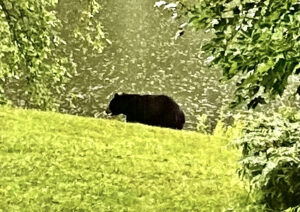 I return to the Mama Bear identity one last time. Perusing the internet I found one statement in an ad for what was dubbed a Mama Bear fleece, that stated: “tough mamas maximize every day.” I also landed on this: “The real definition: A mama bear is a mama with boundaries. A woman who parents the best way she can, for her child, and a woman who doesn’t apologize for her choices. A mama bear is a woman who asserts herself in any way as a parent. She says ‘no’”. Mama Bear. I’ll take it.https://abigailgranner.com/2020/11/01/what-mama-bear-really-means/
I return to the Mama Bear identity one last time. Perusing the internet I found one statement in an ad for what was dubbed a Mama Bear fleece, that stated: “tough mamas maximize every day.” I also landed on this: “The real definition: A mama bear is a mama with boundaries. A woman who parents the best way she can, for her child, and a woman who doesn’t apologize for her choices. A mama bear is a woman who asserts herself in any way as a parent. She says ‘no’”. Mama Bear. I’ll take it.https://abigailgranner.com/2020/11/01/what-mama-bear-really-means/
*********************************************************************************
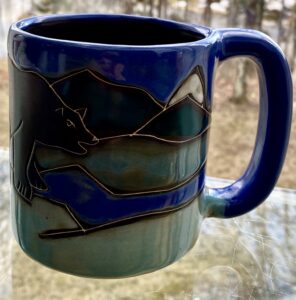
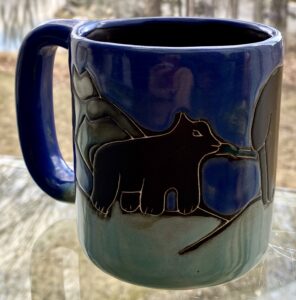 Note: I take issue with this survey of black bears in Vermont! The bears in my neighborhood stroll, unconcerned, across patios and along country roads. By later in the summer, when readily available food in the woods is not so readily available, “our” bears have no problem searching dumpsters, around outdoor grills and even through an open door if they happen upon one. However, I do live in a region where bears find a natural habitat. https://vtfishandwildlife.com/learn-more/vermont-critters/mammals/black-bear
Note: I take issue with this survey of black bears in Vermont! The bears in my neighborhood stroll, unconcerned, across patios and along country roads. By later in the summer, when readily available food in the woods is not so readily available, “our” bears have no problem searching dumpsters, around outdoor grills and even through an open door if they happen upon one. However, I do live in a region where bears find a natural habitat. https://vtfishandwildlife.com/learn-more/vermont-critters/mammals/black-bear
However, note that a more recent notice mandates bear boxes and other bear prevention practices for hikers on the Long Trail. Bears are proliferating and are savvy. They know that hikers bring food. Hopefully they do not leave food.
https://www.greenmountainclub.org/hiking/wildlife/
This is a fascinating report on bears that you might want to take a few minutes to read: https://www.nps.gov/yell/learn/nature/denning.htm
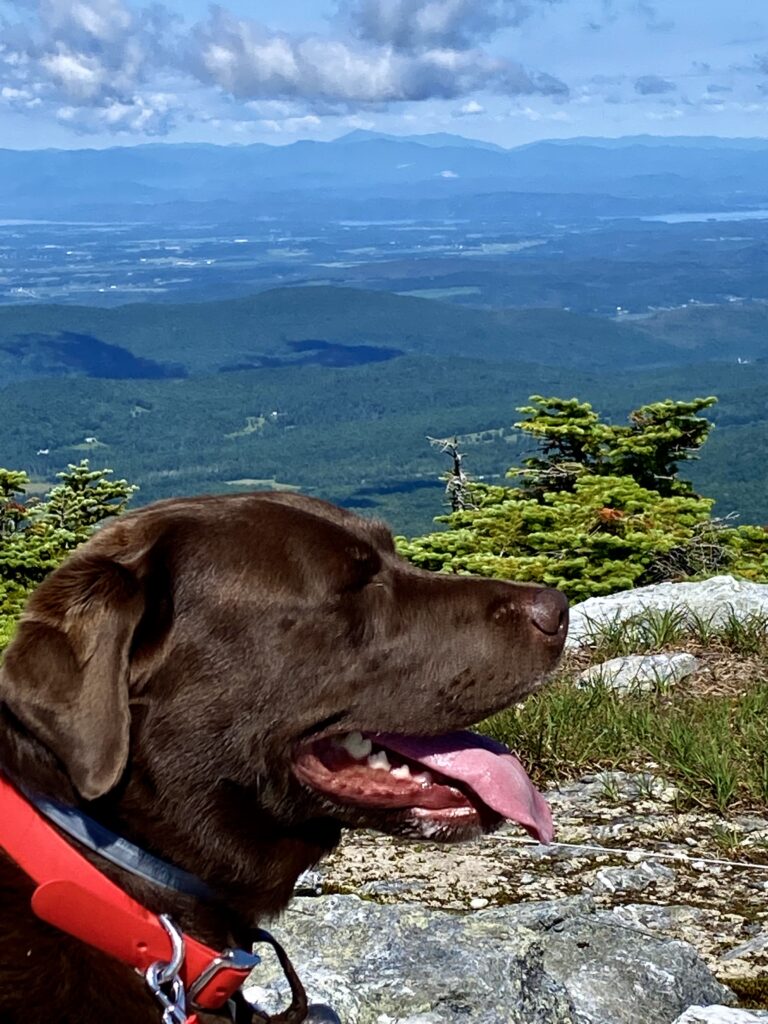
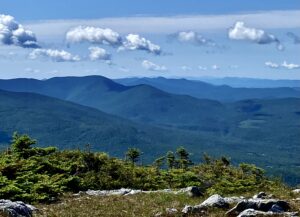 So I will suggest the same to each of you, my friends. Has there ever been a time in history when someone somewhere wasn’t afraid for his or her country? Do we think Abe had it any easier? My daughter’s favorite history teacher taught what she dubbed the “spiral theory of history.” So it seems. If all we do is wring our hands, complain, or sit it out, Ryan Holiday would have some words of advice for us – strong words paraphrased from The Stoics.
So I will suggest the same to each of you, my friends. Has there ever been a time in history when someone somewhere wasn’t afraid for his or her country? Do we think Abe had it any easier? My daughter’s favorite history teacher taught what she dubbed the “spiral theory of history.” So it seems. If all we do is wring our hands, complain, or sit it out, Ryan Holiday would have some words of advice for us – strong words paraphrased from The Stoics.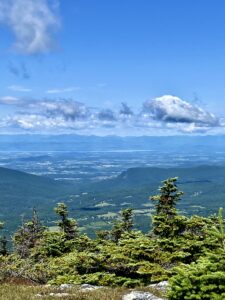 So today I celebrate my family and my community. I celebrate those who have the courage to question; those who define their beliefs and values and then stand up for them. I celebrate those who reach out to the less fortunate and I celebrate those who put words into action. I celebrate those who refuse to simply accept, “it is what it is.” Furthermore, I celebrate those who do so without violence.
So today I celebrate my family and my community. I celebrate those who have the courage to question; those who define their beliefs and values and then stand up for them. I celebrate those who reach out to the less fortunate and I celebrate those who put words into action. I celebrate those who refuse to simply accept, “it is what it is.” Furthermore, I celebrate those who do so without violence.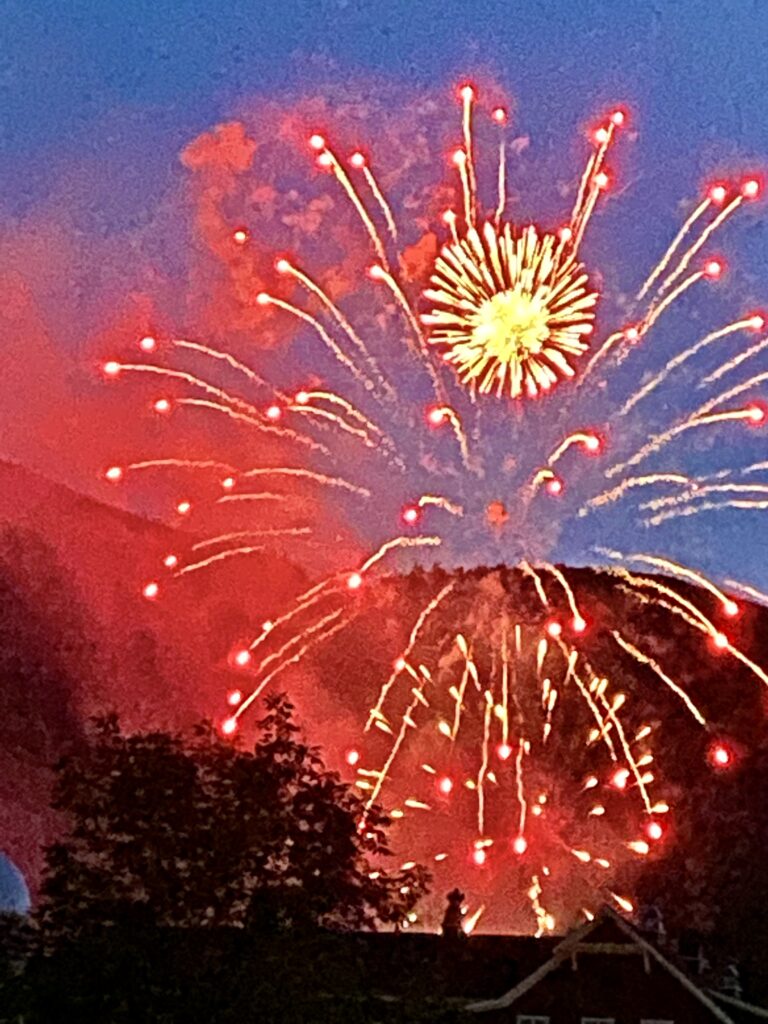


 The Green Mountain National Forest, and more specifically the Camel’s Hump State Forest, are just outside my door. It is therefore no surprise that black bears, who find this an ideal setting in which to live, breed and raise their young, are my next-door neighbors. For the most part, they are good neighbors. They have yet to knock on my door, but they have walked within yards of my home. They keep going, though, as there is nothing to tempt them and, if she notices, my chocolate Lab, Sophie, will make quite a fuss.
The Green Mountain National Forest, and more specifically the Camel’s Hump State Forest, are just outside my door. It is therefore no surprise that black bears, who find this an ideal setting in which to live, breed and raise their young, are my next-door neighbors. For the most part, they are good neighbors. They have yet to knock on my door, but they have walked within yards of my home. They keep going, though, as there is nothing to tempt them and, if she notices, my chocolate Lab, Sophie, will make quite a fuss. But let me go back to some of what I have learned. First of all, here in Vermont, we have BLACK bears. I first learned this a few years ago. I was hiking a 4000’ trail in New Hampshire on a day when there were very few cars parked on the lot below so allowed Sophie to hike off leash. At one point she ran just ahead of me, around a sharp turn, and I heard a voice shout – “OH (expletive-expletive)! If this is a bear, I’m dead!” (Note, Sophie is effusive in her greetings.) Within seconds several other young male voices laughed and teased the first male and began to play with Sophie. One reminded him that if, in fact, this had been a brown bear, he would be dead.
But let me go back to some of what I have learned. First of all, here in Vermont, we have BLACK bears. I first learned this a few years ago. I was hiking a 4000’ trail in New Hampshire on a day when there were very few cars parked on the lot below so allowed Sophie to hike off leash. At one point she ran just ahead of me, around a sharp turn, and I heard a voice shout – “OH (expletive-expletive)! If this is a bear, I’m dead!” (Note, Sophie is effusive in her greetings.) Within seconds several other young male voices laughed and teased the first male and began to play with Sophie. One reminded him that if, in fact, this had been a brown bear, he would be dead. Which brings me back to my Mama Bear story. In 2000, I found myself unexpectedly single and in Santa Fe with my daughter who had just graduated from high school. It was meant to be a family celebration but became something much different. With my daughter’s help, I connected with the strength that I would need to go forward and recognized that the small, stone bear I purchased had special significance for me and for the years ahead. In Native American tradition, bears symbolize physical strength, leadership and are known as the “first helper.” Bear paws are a symbol representing inner strength. My new little figurine of a Zuni bear signifies The Guardian of the Earth. A heart-line arrow going from head to heart symbolizes a warrior’s heart, strong like the bear’s. If no longer a wife, I would be forever a Mama Bear. Today my bear sits on my desk next to my computer monitor. It has traveled many miles and through many situations since the year 2000.
Which brings me back to my Mama Bear story. In 2000, I found myself unexpectedly single and in Santa Fe with my daughter who had just graduated from high school. It was meant to be a family celebration but became something much different. With my daughter’s help, I connected with the strength that I would need to go forward and recognized that the small, stone bear I purchased had special significance for me and for the years ahead. In Native American tradition, bears symbolize physical strength, leadership and are known as the “first helper.” Bear paws are a symbol representing inner strength. My new little figurine of a Zuni bear signifies The Guardian of the Earth. A heart-line arrow going from head to heart symbolizes a warrior’s heart, strong like the bear’s. If no longer a wife, I would be forever a Mama Bear. Today my bear sits on my desk next to my computer monitor. It has traveled many miles and through many situations since the year 2000. I return to the Mama Bear identity one last time. Perusing the internet I found one statement in an ad for what was dubbed a Mama Bear fleece, that stated: “tough mamas maximize every day.” I also landed on this: “The real definition: A mama bear is a mama with boundaries. A woman who parents the best way she can, for her child, and a woman who doesn’t apologize for her choices. A mama bear is a woman who asserts herself in any way as a parent. She says ‘no’”. Mama Bear. I’ll take it.
I return to the Mama Bear identity one last time. Perusing the internet I found one statement in an ad for what was dubbed a Mama Bear fleece, that stated: “tough mamas maximize every day.” I also landed on this: “The real definition: A mama bear is a mama with boundaries. A woman who parents the best way she can, for her child, and a woman who doesn’t apologize for her choices. A mama bear is a woman who asserts herself in any way as a parent. She says ‘no’”. Mama Bear. I’ll take it.
 Note: I take issue with this survey of black bears in Vermont! The bears in my neighborhood stroll, unconcerned, across patios and along country roads. By later in the summer, when readily available food in the woods is not so readily available, “our” bears have no problem searching dumpsters, around outdoor grills and even through an open door if they happen upon one. However, I do live in a region where bears find a natural habitat.
Note: I take issue with this survey of black bears in Vermont! The bears in my neighborhood stroll, unconcerned, across patios and along country roads. By later in the summer, when readily available food in the woods is not so readily available, “our” bears have no problem searching dumpsters, around outdoor grills and even through an open door if they happen upon one. However, I do live in a region where bears find a natural habitat. 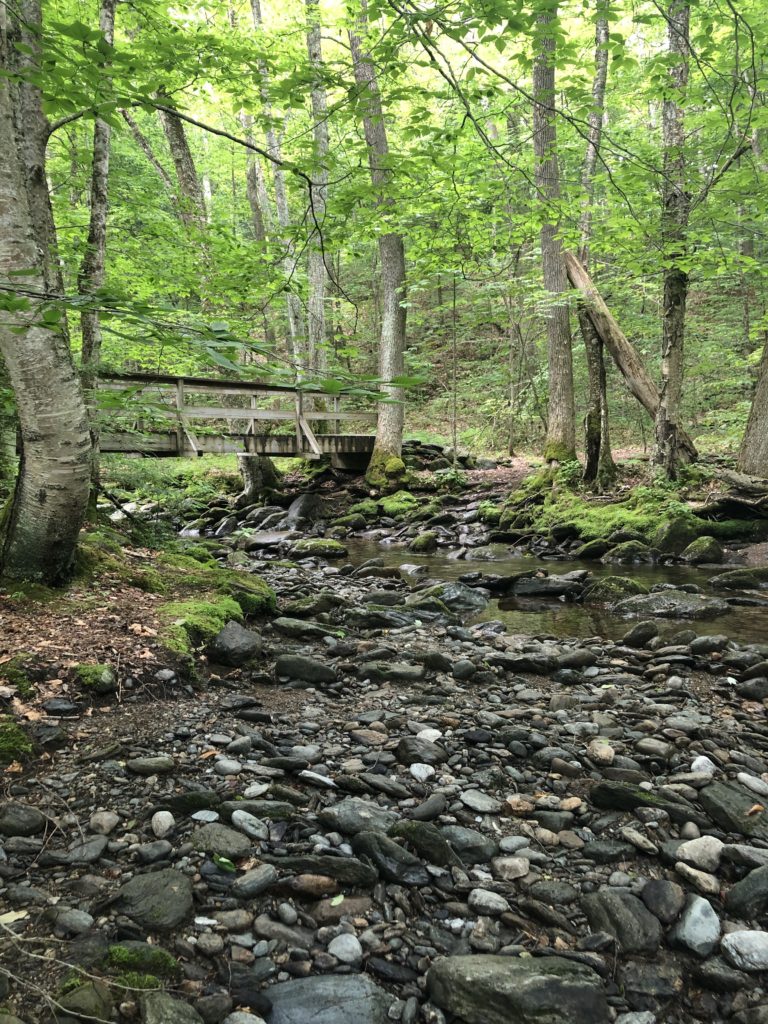 Sharing the summer months with an informal group of individuals loosely connected by their interest in hiking is proving to be a learning experience for all of us. Arguably, any able-bodied person can hike. But does everyone want to? No. I certainly didn’t.
Sharing the summer months with an informal group of individuals loosely connected by their interest in hiking is proving to be a learning experience for all of us. Arguably, any able-bodied person can hike. But does everyone want to? No. I certainly didn’t.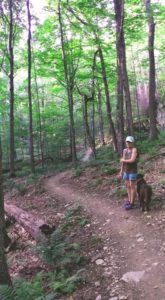 And then came Sophie, my now almost 3-year-old Chocolate Lab who opened this wonderful world for me. Because training is in my psyche, poor Sophie underwent/undergoes lots and lots of training. An exuberantly friendly pup (she IS a Lab, after all) with reliably good trail manners, she also serves as a canine GPS. All this is to say that because there is nothing (except swimming) that Sophie loves more than trails, I have become an avid hiker!
And then came Sophie, my now almost 3-year-old Chocolate Lab who opened this wonderful world for me. Because training is in my psyche, poor Sophie underwent/undergoes lots and lots of training. An exuberantly friendly pup (she IS a Lab, after all) with reliably good trail manners, she also serves as a canine GPS. All this is to say that because there is nothing (except swimming) that Sophie loves more than trails, I have become an avid hiker!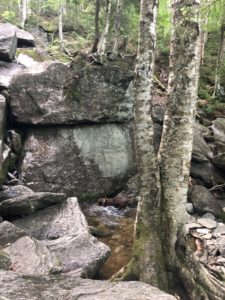 How does one define hiking, anyway? There are meandering forest trails, picturesque bogs, barely defined paths, and rocky climbs with steep precipices and vistas to die for. It’s all hiking and, ultimately, it’s all about making the decision to get out the door and go.
How does one define hiking, anyway? There are meandering forest trails, picturesque bogs, barely defined paths, and rocky climbs with steep precipices and vistas to die for. It’s all hiking and, ultimately, it’s all about making the decision to get out the door and go.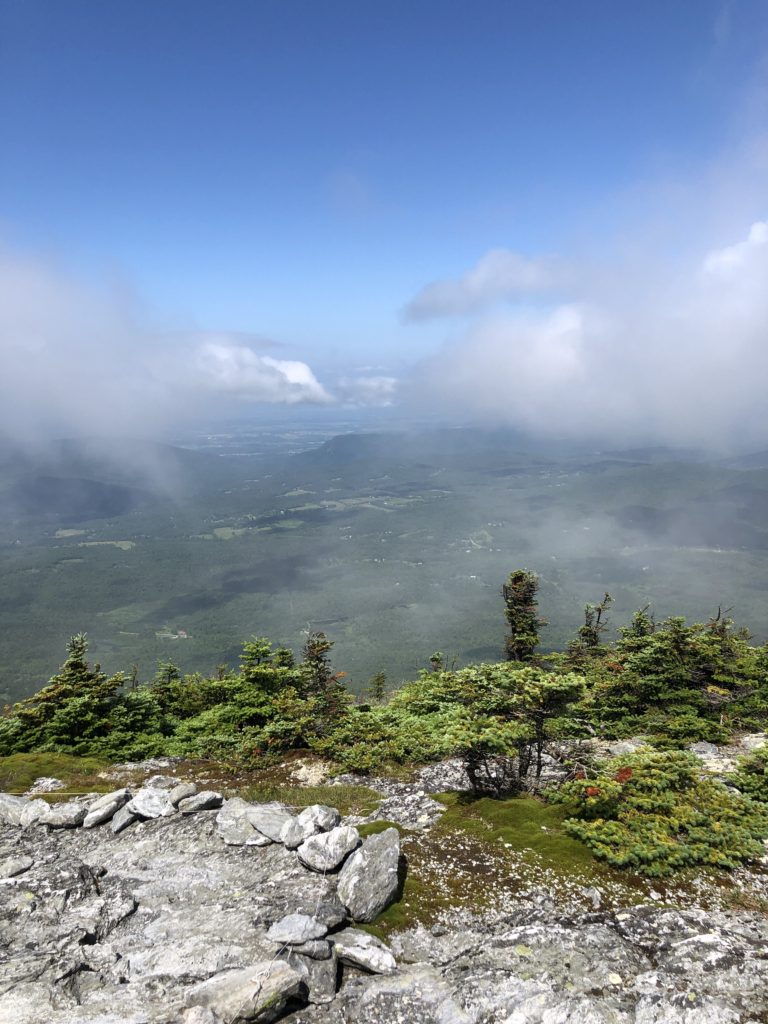
 Each hike, each day, each weather condition, each hiking partner(s), each new pair of shoes, each trail snack, each guide book, each hangover (oops), each season, each year – there are no two hikes alike and no one hike that stays the same. It’s all experience – and connection.
Each hike, each day, each weather condition, each hiking partner(s), each new pair of shoes, each trail snack, each guide book, each hangover (oops), each season, each year – there are no two hikes alike and no one hike that stays the same. It’s all experience – and connection.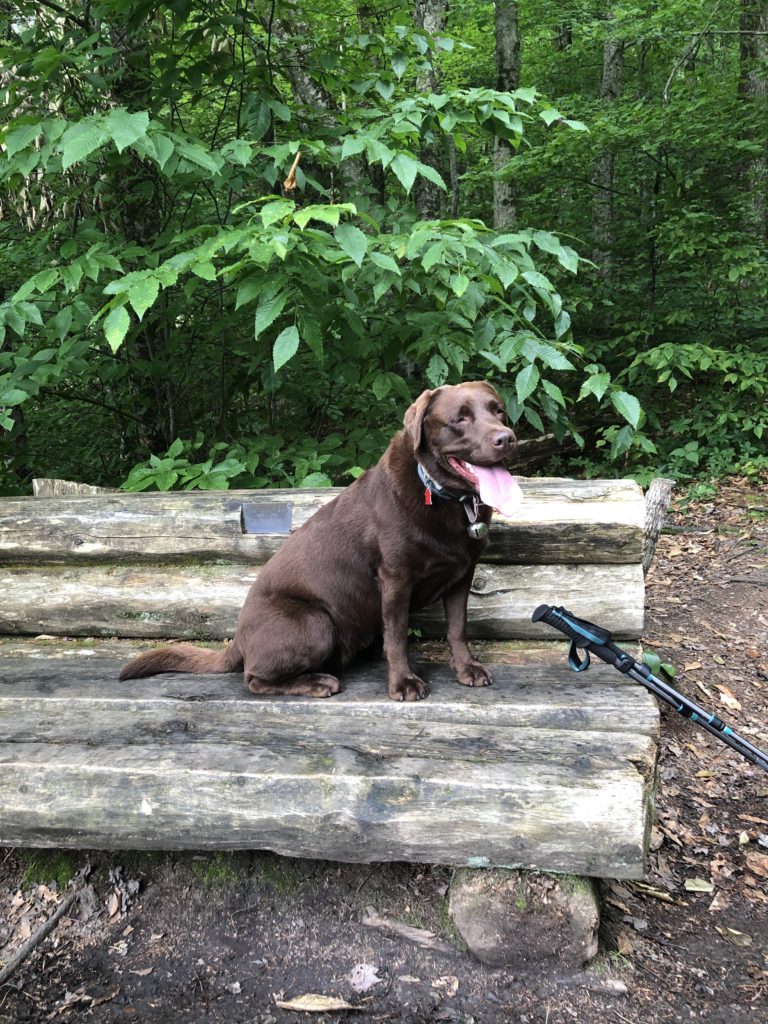
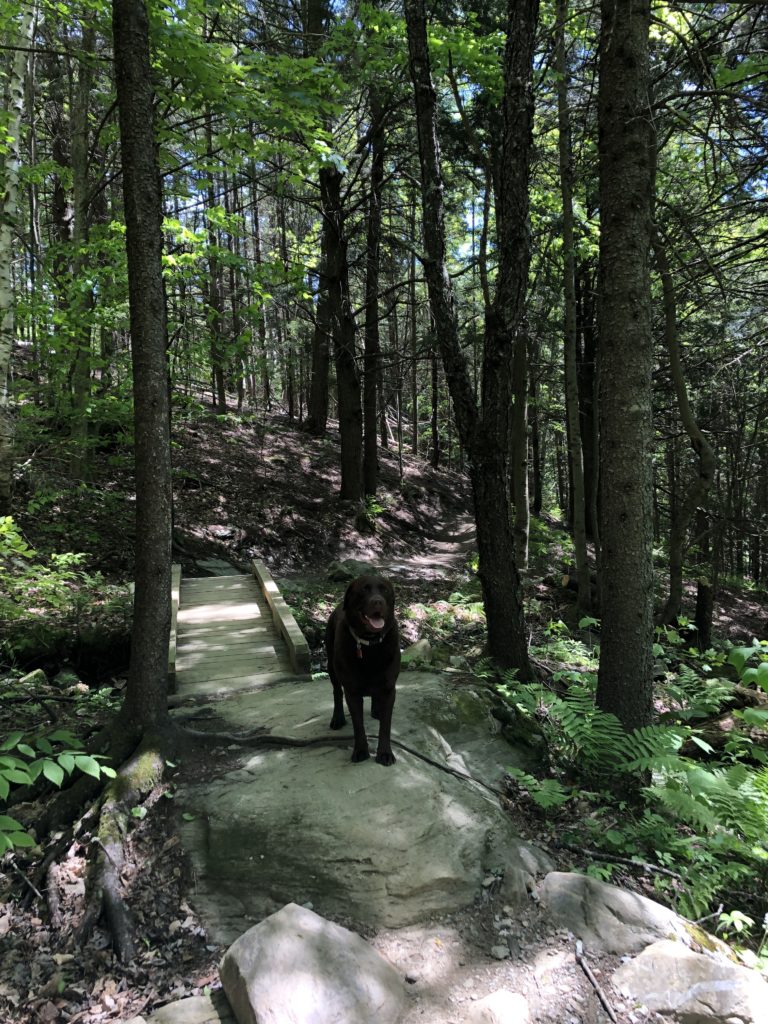
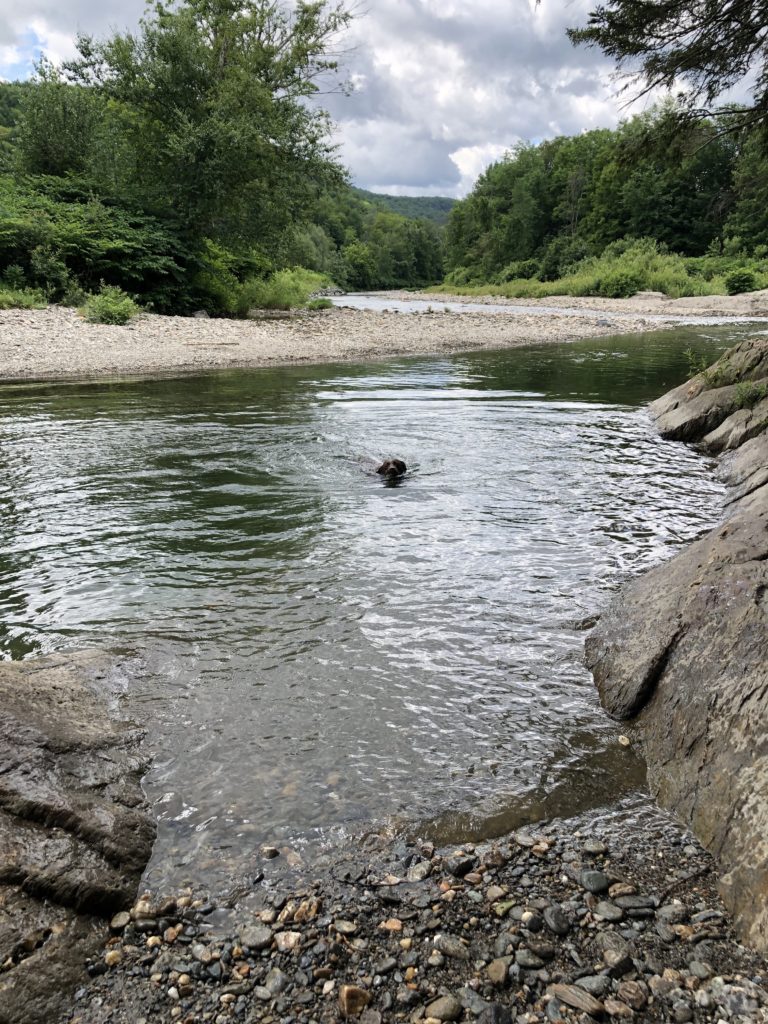

 I prefer dates, nuts, raisins, trail mix, ok and yes a Clif bar that I always share with my pup, Sophie. I do not promote trendy engineered foods such as power drinks and bars, but rather support “real” foods. I do think that part or all of your drinking water should contain some electrolytes (I prefer Skratch https://www.skratchlabs.com/collections/drinks/products/sport-hydration-drink-mix?gclid=CjwKCAjwmZbpBRAGEiwADrmVXhtL_Wt_SWL_brlBskRWrAyTwOGxdUjb1UfUquBWSHrhhaly2kNGMBoCIcAQAvD_BwE&variant=42591625797or Tailwind https://www.tailwindnutrition.com) and in fact, sipping on Tailwind along the way eliminates a need for food at all unless you get hungry! Oh and Lara is an excellent choice for a bar. Avoid sugary stuff as that will drop you too soon.
I prefer dates, nuts, raisins, trail mix, ok and yes a Clif bar that I always share with my pup, Sophie. I do not promote trendy engineered foods such as power drinks and bars, but rather support “real” foods. I do think that part or all of your drinking water should contain some electrolytes (I prefer Skratch https://www.skratchlabs.com/collections/drinks/products/sport-hydration-drink-mix?gclid=CjwKCAjwmZbpBRAGEiwADrmVXhtL_Wt_SWL_brlBskRWrAyTwOGxdUjb1UfUquBWSHrhhaly2kNGMBoCIcAQAvD_BwE&variant=42591625797or Tailwind https://www.tailwindnutrition.com) and in fact, sipping on Tailwind along the way eliminates a need for food at all unless you get hungry! Oh and Lara is an excellent choice for a bar. Avoid sugary stuff as that will drop you too soon.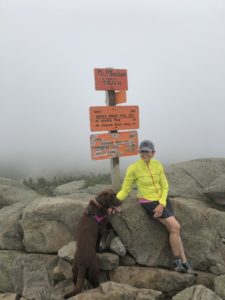
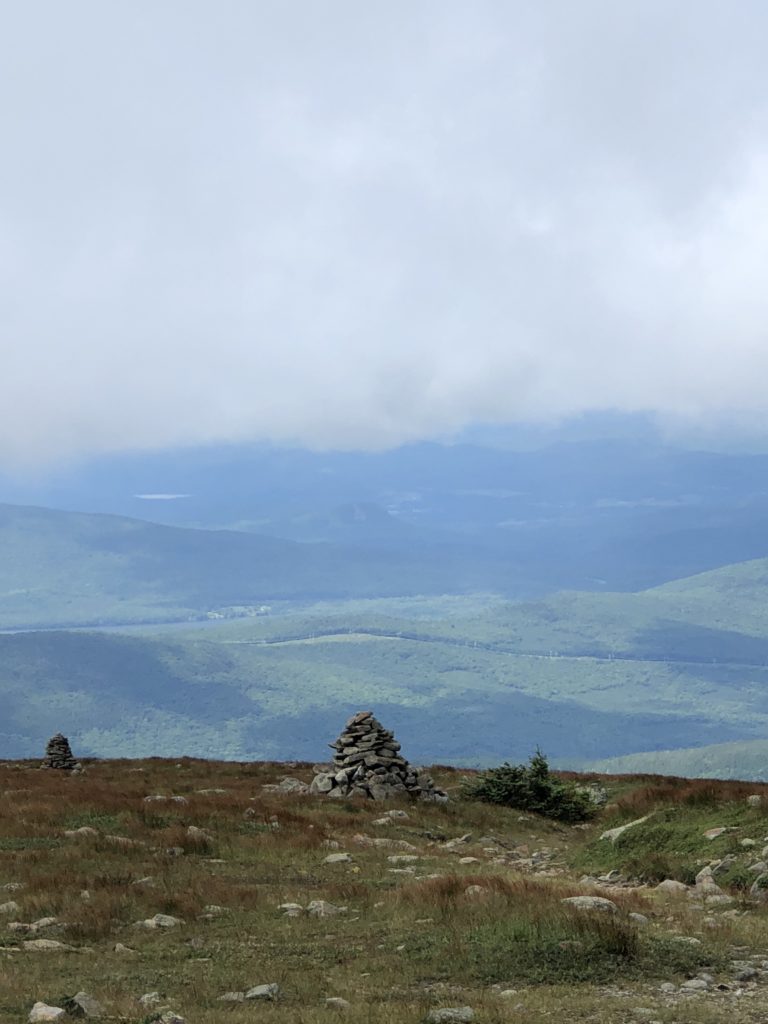
 drives many minutes of each day. It is motivation that underpins major chunks of enthusiasm, fuels the determination to persevere, and keeps one moving on a forward path professionally, personally and simply in being alive.
drives many minutes of each day. It is motivation that underpins major chunks of enthusiasm, fuels the determination to persevere, and keeps one moving on a forward path professionally, personally and simply in being alive.
 On a personal note, I found myself slipping from some of the structured practices that I know benefit my day. Early morning journaling and meditation was being lost in a few minutes of extra sleep, at home Yoga practice was giving way to lethargy, outings in the woods with my pup were abandoned. Of course, there is solid reasoning behind this – I need that sleep or the woods are just too wet and messy right now. (Besides, the bears are waking up and they’re hungry!)
On a personal note, I found myself slipping from some of the structured practices that I know benefit my day. Early morning journaling and meditation was being lost in a few minutes of extra sleep, at home Yoga practice was giving way to lethargy, outings in the woods with my pup were abandoned. Of course, there is solid reasoning behind this – I need that sleep or the woods are just too wet and messy right now. (Besides, the bears are waking up and they’re hungry!)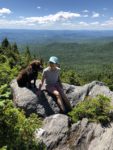 Because one of my goals is to be ready to hike when Vermont trails open again the end of May, I need to build strength and endurance now. Much to the delight of my dog, we are leash walking dirt roads a minimum of 3 miles a day, adding ½ mile to our one weekly long walk which should give us at least 10 miles by the time the hikes begin, adding at least one straight up climb each week (useful to live near a ski area that is closed for the season), and, for fun and mental flexibility, daily making sure to have plenty of off-leash ball play and some agility drills for both of us.itself.
Because one of my goals is to be ready to hike when Vermont trails open again the end of May, I need to build strength and endurance now. Much to the delight of my dog, we are leash walking dirt roads a minimum of 3 miles a day, adding ½ mile to our one weekly long walk which should give us at least 10 miles by the time the hikes begin, adding at least one straight up climb each week (useful to live near a ski area that is closed for the season), and, for fun and mental flexibility, daily making sure to have plenty of off-leash ball play and some agility drills for both of us.itself.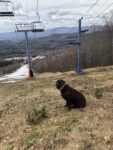
 I love to hike and explore in Vermont and New Hampshire with my Chocolate Lab, Sophie. Our day hikes take us from meandering, wooded brook-side trails to rock face and astonishing summit views. Sophie, not quite 2, loves these adventures and is responsible for my new passion – hiking.
I love to hike and explore in Vermont and New Hampshire with my Chocolate Lab, Sophie. Our day hikes take us from meandering, wooded brook-side trails to rock face and astonishing summit views. Sophie, not quite 2, loves these adventures and is responsible for my new passion – hiking. Perhaps what is significant here is that I know there ARE bears in the woods and on the trails. How do I know this? No, I have not met one – yet. I have seen a bear on my husband’s game camera set up on a trail I use frequently. I have stepped over bear scat and I have read blog posts, seen tv news reports, stopped to read signs posted at State Park entrances, and heard anecdotal accounts of bear sightings, often corroborated by cell phone pics.
Perhaps what is significant here is that I know there ARE bears in the woods and on the trails. How do I know this? No, I have not met one – yet. I have seen a bear on my husband’s game camera set up on a trail I use frequently. I have stepped over bear scat and I have read blog posts, seen tv news reports, stopped to read signs posted at State Park entrances, and heard anecdotal accounts of bear sightings, often corroborated by cell phone pics.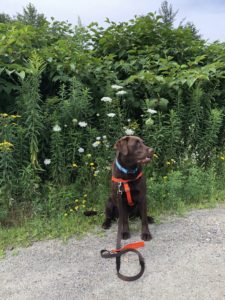 For those of us who hike with dogs, there is an extra layer of prevention and protection for which we, the human companions, need take responsibility. I would hope that my dog would sense the presence of a bear long before I would and would alert me. I would fervently hope that my dog would not notice cubs and, thinking they are other pups to be greeted and played with, go do so. (Labs are oh so friendly with other dogs, aren’t they?). Disaster would ensue.
For those of us who hike with dogs, there is an extra layer of prevention and protection for which we, the human companions, need take responsibility. I would hope that my dog would sense the presence of a bear long before I would and would alert me. I would fervently hope that my dog would not notice cubs and, thinking they are other pups to be greeted and played with, go do so. (Labs are oh so friendly with other dogs, aren’t they?). Disaster would ensue. WILDLIFE – Green Mountian Club August 2, 2018 Black Bears–Bears have become more active around Long Trail campsites and trails in the last few years. In areas with posted bear warnings, please follow a few basic steps:
WILDLIFE – Green Mountian Club August 2, 2018 Black Bears–Bears have become more active around Long Trail campsites and trails in the last few years. In areas with posted bear warnings, please follow a few basic steps: